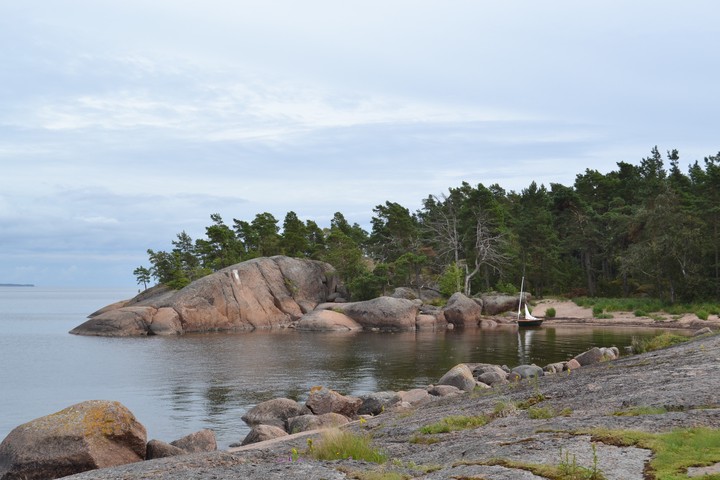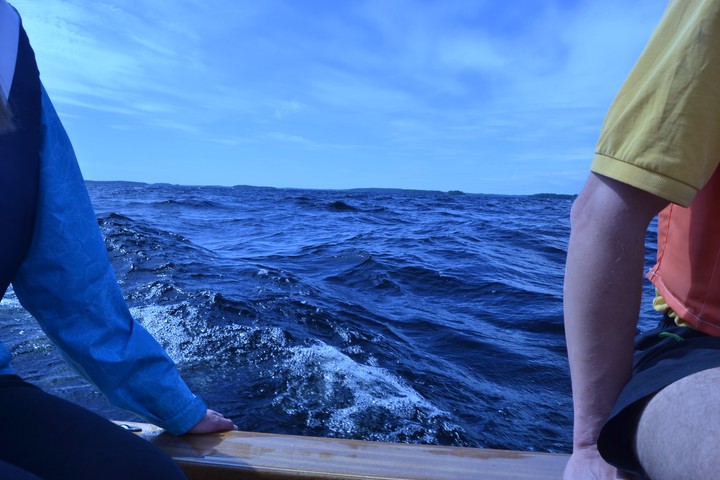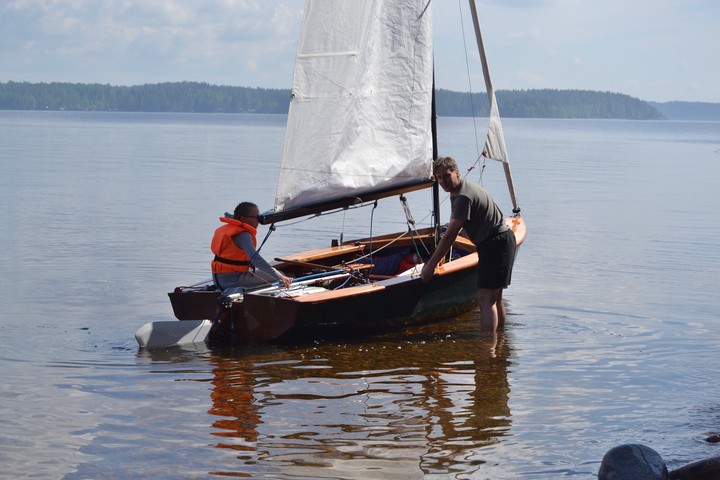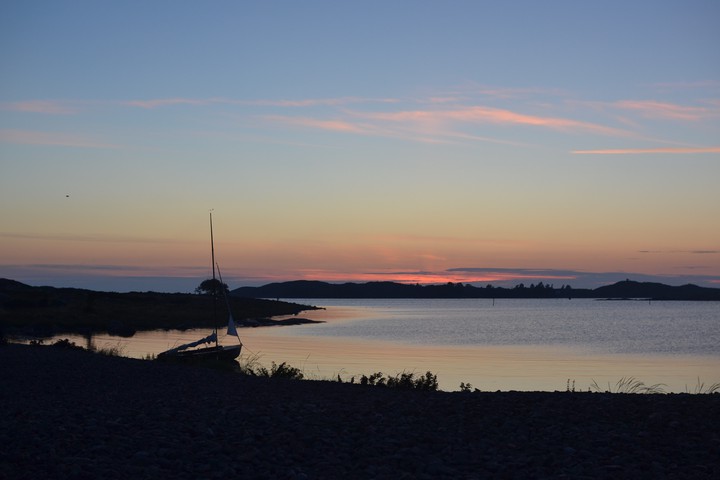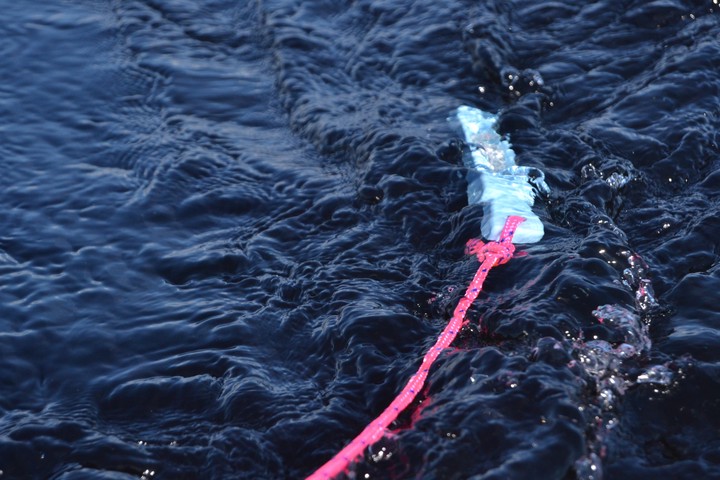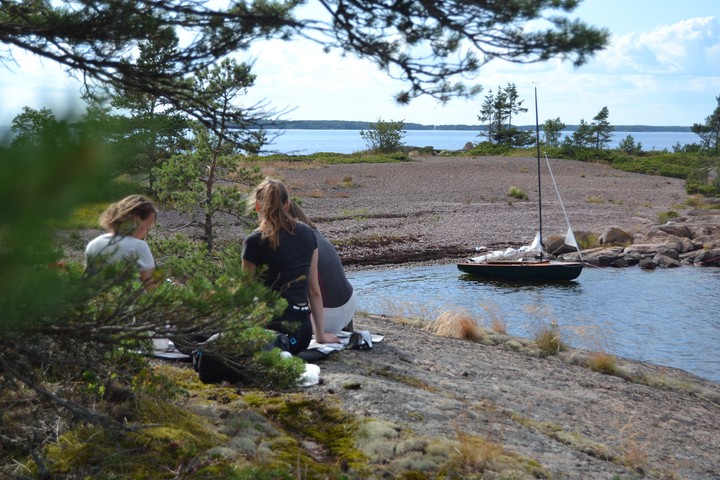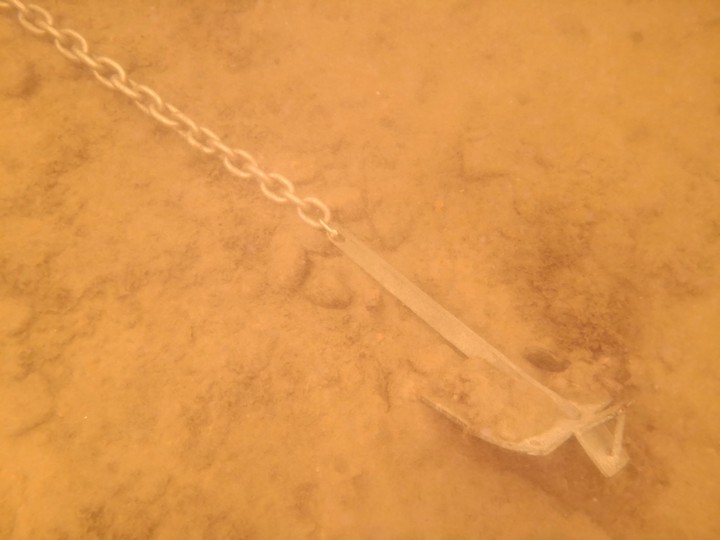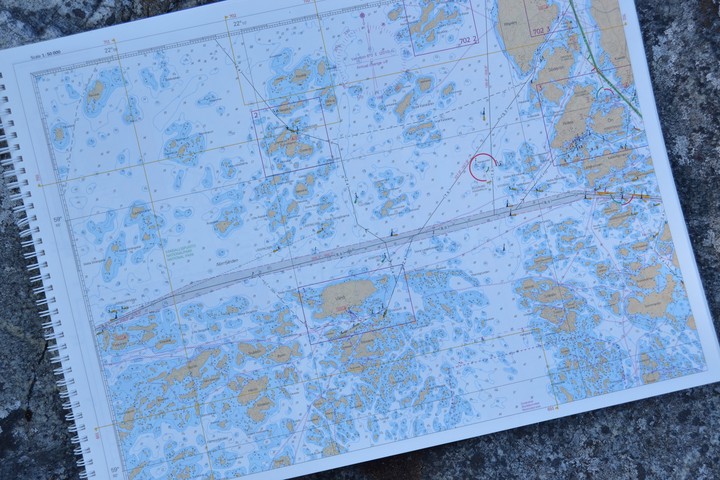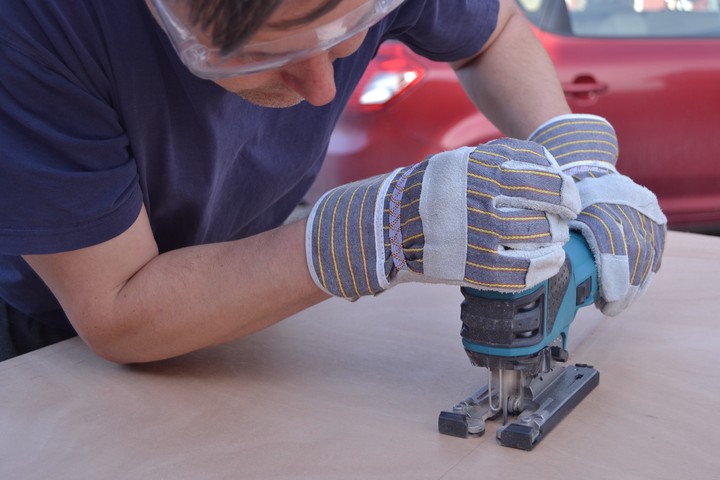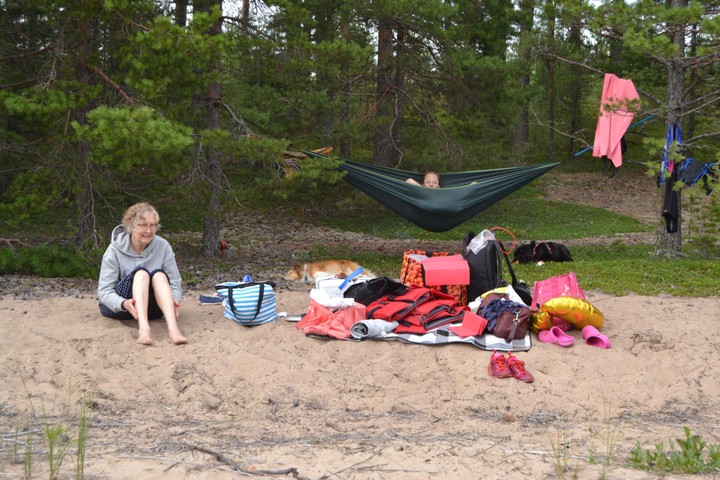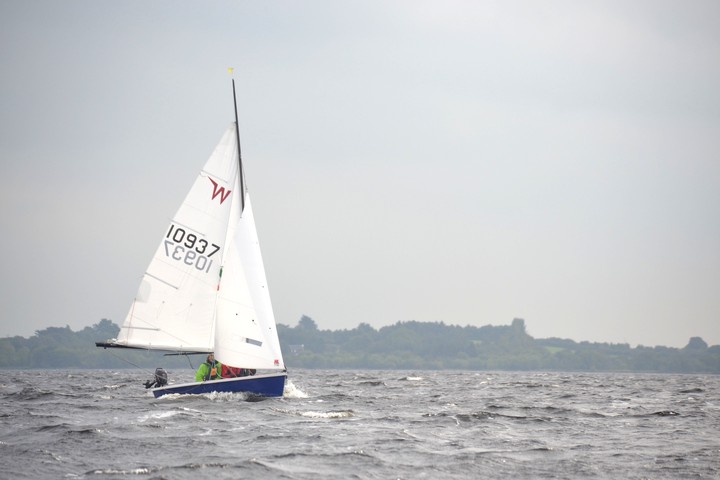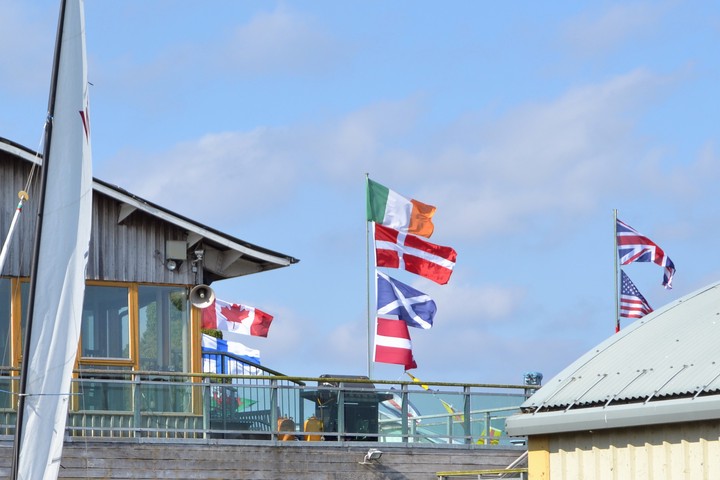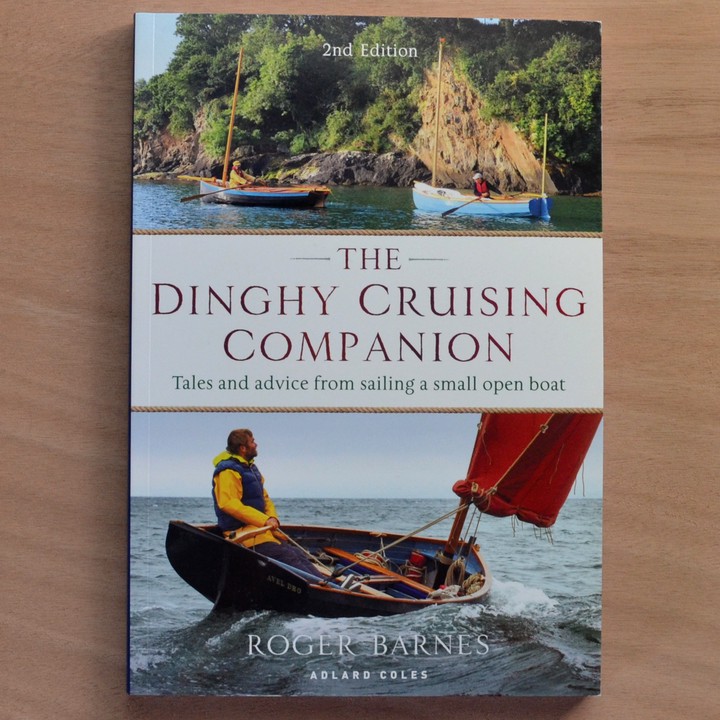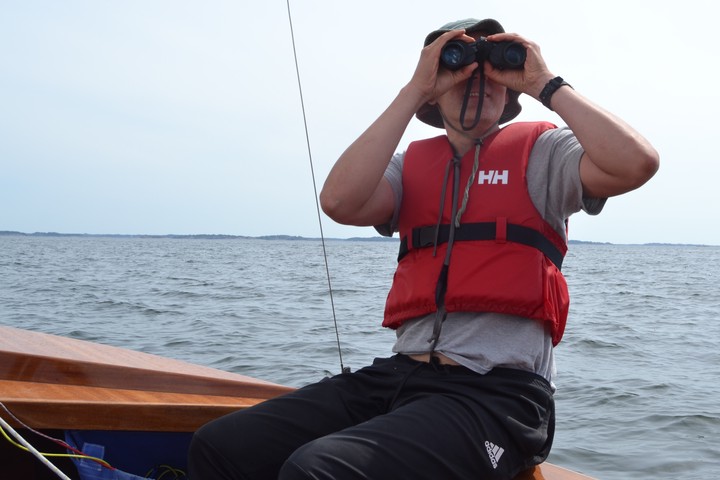Frequently Asked Questions
Below there are some questions you face from time to time. The given answers are my personal opinions and thoughts that may be incorrect or inaccurate. The Finnish version of this page has more content.
What is this site about?
You are reading Hyvässä slöörissä blog which is about cruising on sailing dinghies, also known as gunkholing. Most of the sailing takes place in the Finnish waters but some experiences have been gained abroad too. At moment the primary sailing-vessel is a Wayfarer dinghy, called as Sarastus. In addition to it, SCAMP dinghy is being built. The site consists of a blog which is in chronological order and a hierarchical set of pages accessible from the top menu. The primary language of the site is Finnish but most of the content is translated to English too. This site is a personal non-profit project.
What does the site’s name mean?
The name of the blog, Hyvässä slöörissä, is a Finnish nautical expression which can be translated as nicely broad reached. In a broad reach, the wind is coming from behind the sailing craft at an angle. Many sailors consider broad reach as the most enjoyable point of sail.
Why dinghy cruising?
I have experience in keelboats, sailing dinghies, motorboats, rowing boats, canoes, kayaks and rubber boats but sailing dinghies suitable for cruising are my preferred choice. Few years ago I sold my old glassfibre keelboat and upgraded to a sailing dinghy. My motivation and philosophy are outlined below.
- Sitting close to the surface of water in a quiet small craft which follows every movement of the waves and responds to every change in the wind is a magnificent experience. It is like living in harmony with the nature.
- You can choose the starting point of your trip freely. Especially in the land of thousands of lakes and a long coastline this is a significant benefit.
- Because of the shallow draft, you have more destination options available. Often visits to less well-known nature destinations are the most exciting ones.
- Whether it’s about recovering from capsize, walking the boat in water or moving the boat on land, small craft are easier to “man-handle” when needed.
- You can repair the boat at home, and in a stormy night you don’t need to worry about her survival on the mooring.
- A sailing dinghy is cheap to sail, cheap to maintain and cheap to store. Thieves usually ignore it.
- Sailing dinghies are designed to be unsinkable.
- Simplicity and minimalism have their own charm.
- A small craft makes you more approachable that is a social element.
Naturally there are downsides too, as an unballasted boat can capsize, space in dinghies is limited and sailing season of an open boat is typically shorter. Nevertheless, I prefer dinghy sailing because of its beauty. It’s not about distance covered but detail experienced.
Where can you sail with a sailing dinghy?
Most of the cruising dinghies meet design categories C and D of the CE certification. That means they are intended for use in definite conditions on inland waters, archipelagos and coasts. Despite this, some have also sailed them on the high seas in very challenging conditions, but that is by no means recommended. It is worth noting that the reported maximum crew size for Category C is generally smaller than for Category D.
I would say the following factors delimit the environment suitable for dinghy cruising:
- surface water and air temperature (risk of hypothermia and cold shock)
- sailor’s experience
- “seaworthiness” of the dinghy
- crew size
- prevailing weather conditions (waves, wind and tidal currents)
- landing opportunities (solid rocky shores are the most difficult ones)
Although conditions on lakes are generally lighter, the weather in the archipelagoes and the coasts is often more predictable and the gusts softer, and there is also more space for beating. Sailing on the open sea should be avoided.
How long is the sailing season?
The main factors limiting the length of the sailing season are water temperature, air temperature, wind conditions and day length. Of course, holiday times and other commitments also affect, and there are individual differences about general condition too. As a general rule, I avoid sailing when water temperature is below 12.5°C. Sailing expert Howard Rice summarised the effect of temperature really well:
- cold water, cold air ‒ typically a deadly combination
- cold water, warm air ‒ you might get lucky
- warm water, warm air ‒ best scenario
- warm water, cold air ‒ still dangerous
The following table shows the average conditions in Suur-Saimaa area. The averages, of course, are only indicative, and each year is different. Surface water temperature on open waters is also typically lower than at measuring stations near shores. Typically the optimal sailing time is from mid-June to end of August.
| Date | Sun | Darkness | Water | Air |
|---|---|---|---|---|
| 4:55 - 21:10 (16¼ h) | 23:44 - 2:21 | 5°C | 12/2°C | |
| 4:17 - 21:46 (17½ h) | - | 9°C | 15/5°C | |
| 3:42 - 22:25 (18¾ h) | - | 13°C | 18/8°C | |
| 3:27 - 22:44 (19¼ h) | - | 17°C | 20/10°C | |
| 3:35 - 22:44 (19¼ h) | - | 19°C | 21/12°C | |
| 4:00 - 22:24 (18½ h) | - | 20°C | 22/13°C | |
| 4:40 - 21:44 (17 h) | - | 20°C | 21/13°C | |
| 5:16 - 21:04 (15¾ h) | 23:21 - 2:58 | 19°C | 18/11°C | |
| 5:59 - 20:12 (14¼ h) | 22:00 - 4:11 | 18°C | 15/9°C | |
| 6:33 - 19:28 (13 h) | 21:05 - 4:55 | 15°C | 13/7°C | |
| 7:13 - 18:37 (11½ h) | 20:10 - 5:40 | 12°C | 10/4°C | |
| 7:49 - 17:53 (10h) | 19:27 - 6:15 | 9°C | 7/2°C |
The table lists the sunrise, sunset, day length times and nautical darkness (which is the period between nautical dusk and dawn) in Lappeenranta and the average surface water temperature at the Saimaa Lauritsala measuring station between 1991-2000 (Source: Suomen vesistäjen lämpötilaolot 1900-luvulla, Johanna Korhonen, 2002). The air temperature column shows the interpolated statistical average daily maximum and minimum temperature at Sarviniemi in Saimaa.
How do you do without a head, bunks, galley, refrigerator and warm shower?
In fact, we can’t do without them, but they are not just carried on the boat. The launching sites and destinations have usually a toilet, but if not, we use the traditional forest plus shovel plus pit method. If we need a toiled when sailing, we typically look for a leeward shore to have a “pee break”. For female sailors, using a bucket on a boat seem not to be an option.
Wayfarer can sleep 1-2 people but it’s a little uncomfortable because of the low thwarts. For overnight trips we have a land tent with us. The meals are either eat on the boat as snacks or cooked with a camping stove or fire on the shore. There is no fridge, but we have small cooler bags where some of the snacks stay cool. Baths are taken either at home or in the lake.
After all, it’s about what you value. You can easily reach the top of the mountain by cable car or SUV, but climbing there with your own hands and feet has its own charm. The same goes for the minimalist and modest wind-powered small boat, where it feels like it is in direct interaction with the forces of nature.
Is sailing dinghy suitable for cruising with family?
There isn’t one correct answer to this question because it depends on the family, the skipper experience, the sailing waters and the conditions. You have to carry out the risk analysis by yourself. Myself I started family dinghy sailing in the Finnish lakeland when our children were between 9 and 13 years old. I also had plenty of prior sailing experience in keelboats, and my family likes hiking and camping with all its discomfort and inconvenience.
What kind of anchor do you use?
Sarastus has a Danforth type anchor of 2 kg (4.4 lb) with a heavy metal chain of about 1.5 metres. I have used the combination mainly on windward shores, so its reliability in strong winds is untested. On mud bottom a Danforth anchor seem not to hold at all.
Ralph Roberts, who is the well-known Wayfarer cruising guru, shared his practices:
My anchors (1 Danforth and 1 CQR) are only 2kg (5lb), with 1.5m of small link, but fairly heavy chain. These have held my boat in strong onshore winds and rough water. I think the important factor is to attach a 400 to 500mm length of 10mm diam shockcord between the anchor line and the attachment point to the bow - with the remaining anchor line led back into the boat in case the shockcord should fail - this takes the ‘sharp tug’ caused by the wave action, which I am sure is the reason that any anchor drags from its original position. I have 4 of these lengths of shockcord with strong snap hooks attached at each end, and also use them when mooring up to a jetty/pontoon in strong winds, which takes out the jerking and snatching that occurs otherwise.
The Dinghy Cruising Association recommends the following setup:
Anchor: Minimum 10lb (5kg). Anchor cable: minimum 30 metres 8 mm non-floating material, with 2 metres of chain between it and the anchor, secured to a strongpoint inside the boat.
How do you navigate?
While a true mariner relies only on paper charts and a traditional compass, I find electronic nautical charts very useful in a small craft where sailing itself often requires your undivided attention. Of the smartphone applications, my personal favorite at the moment is Swedish Seapilot, although Saimaa is the only Finnish inland water it covers. Navionics has a better coverage in this respect. Touch Protector is a useful helper app which can be used to disable the touch feature of the screen in humid conditions. Naturally, paper maps should be kept in the boat, at least as a backup. They are also a nice way planning your trip as they help you to see the big picture of the waters. Especially with children it is also nice to fix the location on a paper map while sailing. Compass should be a standard instrument in a cruising dinghy.
Can you build a sailing dinghy by yourself?
Building a sailing dinghy by yourself isn’t rocket science but naturally requires study, time, meticulousness and long-term motivation. It is also required that the plans of the boat type are available. For some boat designs it’s also possible to buy CNC cut plywood parts that speed up building time and enhance the resulting quality. Glassfibre dinghies can be made with molds. Out of the designs aimed to home builders, I find the following options most interesting: SCAMP, Ilur, Navigator, Rog'15 and Tiki 21, although Tikis can’t be considered as true sailing dinghies because of their size.
Unfortunately Wayfarer plans aren’t available to home builders anymore. The closest designs might be Fulmar and Navigator, but Ilur is also an attractive alternative if you value rig simplicity, oars and sleeping space more than a planing hull.
What is an ideal dinghy like?
In the table below, I have listed the features that I consider important in a touring sailing yawl. The boats are ranked in the order in which I rate them according to each criterion of quality. In addition, the colours indicate the relative strength of the boat for each characteristic. For each boat, only its most common rig type has been considered, i.e. Wayfarer (Wa) sloop, Ilur (Il) misainier, Navigator (Na) yawl, Scamp (Sc) balanced lugsail, Tiki 21 (T21) Wharram wingsail, RoG'15 (R15) cat ketch, Long Steps (LS) lugyawl and Foxy Lady (FL) unstayed wingsail.
| 1. | 2. | 3. | 4. | 5. | 6. | 7. | 8. | |
|---|---|---|---|---|---|---|---|---|
| Il | Na | R15 | Wa | Sc | FL | LS | T21 | |
| Na | Wa | Sc | Il | R15 | FL | LS | T21 | |
| FL | R15 | LS | Sc | Wa | Na | Il | T21 | |
| Il | Wa | FL | Na | Sc | LS | T21 | R15 | |
| FLr | Ilr | Scr | LSr | R15r | Wap | T21p | Nap | |
| Il | FL | Sc | R15 | LS | Wa | Na | T21 | |
| R15 | FL | Wa | Na | LS | Sc | Il | T21 | |
| R15 | FL | Wa | Na | LS | Sc | Il | T21 | |
| Sc | FL | R15 | Na | LS | Il | T21 | Wa | |
| LS | T21 | Wa | Il | Na | R15 | Sc | FL | |
| T21 | LS | R15 | Sc | Wa | Na | Il | FL | |
| T21 | Il | LS | Sc | Na | R15 | Wa | FL | |
| Sc | LS | R15 | Na | Wa | Il | FL | T21 | |
| Sc | Il | Na | LS | FL | R15 | T21 | Wa | |
| Il | Na | Sc | LS | T21 | Wa | R15 | FL | |
| T21 | R15 | Na | LS | Wa | Sc | FL | Il |
Seaworthiness indicates the estimated capability of the boat in category C waters. It does not indicate offshore capability, as sailing dinghies are not designed for this purpose. Sleeping comfort is a rather subjective matter, but in dry weather, sleeping under a boom tent in a small boat is more comfortable than sleeping in a cabin. In the case of Tiki 21, both options are of course available. Speed and good pointing ability are key factors in assessing a boat’s actual performance, and if you include short launching time, you have a basis for assessing the boat’s ability for long day trips. In the table, dark green is excellent (or ideal), light green is good (or almost ideal), white is average (or moderate deviation from ideal), pink is poor (or significant deviation from ideal) and red is miserable (or serious deviation from ideal).
Which Wayfarer model is best?
This is a rather subjective and even a political question. During my visit to Ireland I sailed in most of the Wayfarer models. Based on my own experiences and others’ opinions, the two best models are Mark 1 and World. Mark 1 is the original wooden beauty while World is a modern practical glassfibre boat. There are actually two generations of Mark 1 Wayfarers, those built in the 1960’s and those in the 1980’s. The latter woodie generation has an advantage, not only because they are newer, but because the glue is modern epoxy instead of urea-formaldehyde based solution which softens by water on course of time.
Whichever model you choose, there are three must-haves for a Wayfarer cruiser:
- Furling genoa which makes it easy and fast to reduce and increase sail area without a need to balance on the (possibly slippery) foredeck. At least British Aero Luff Spars retrofits these.
- Mainsail with two reefing lines. You need a dynema halyard for this modification.
- Masthead floatation which prevents the dinghy from turtling and makes recovery from capsize easier. It’s possible to order a new mainsail with a floatation pocket knit on the top of the sail.
I ordered a new mainsail from EDGE Sails and have been happy with it. The dynema halyard was installed by me.
Is there a Wayfarer association in Finland
Unfortunately there is no Finnish Wayfarer association. The closest ones are in Denmark, Netherlands and United Kingdom. United States and Canada have their own associations too.
Are there any good books or magazines about dinghy cruising?
The most adhered to book on the topic is The Dinghy Cruising Companion written by Roger Barnes. I recommend that book.
American Small Craft Advisor magazine has excellent information for dinghy cruisers, although the perspective is American. Then, when Americans are passionate about something small you better listen carefully. In autumn 2022, the magazine became an online publication with both free and paid articles. The printed version will therefore be discontinued.
British Dinghy Cruising Association has a quarterly magazine for members. Its focus is on raid stories.
In case of Wayfarers, UK Wayfarer Association has a nice magazine available for the members. It’s one of the few magazines with relevant advertisements.
French Chasse-Marée has sometimes articles on sailing dinghies. The magazine is mostly about beauty of traditional sailing, although that’s something seriously forgotten in modern boating, making the magazine magnificent to scan through.
Unfortunately, sailing dinghies are rarely covered by Finnish sailing magazines (e.g. Puupaatti, Purje and Vene) that concentrate on serving interests of mainstream boaters.
For learning navigation skills, RYA Navigation Handbook (Melanie Bartlett) is a good one. For Finns, Veneilijän merenkulkuoppi 1 - Saaristonavigointi book is a more local option.
How can I subscribe to the blog
I consider using an RSS reader application or service as a good way to follow this blog, and they also allow you to follow uncountable number of other blogs too. Here are some options:
- Feedly (Web, iOS, Android)
- RSSowl (Windows, Linux, Mac)
- Feed Wranger (Web, iOS)
- Liferea (Linux)
- Feedrabbit (email)
I’m not a big fan of social media because it can be considered as a digital drug that has been found to increase people’s feelings of loneliness, depression, and even suicide, and also because there algorithms, social score and even censorship determine the content you see. However, both boats have an Instagram account, @sv_sarastus and @sv_merisirri. Their main purpose is to increase visibility of this blog.
How can I contact the blog author?
Questions, comments and other feedback can be sent to me, Timo, by email to address hyvassasloorissa@mailbox.org. Your messages are warmly welcome.
